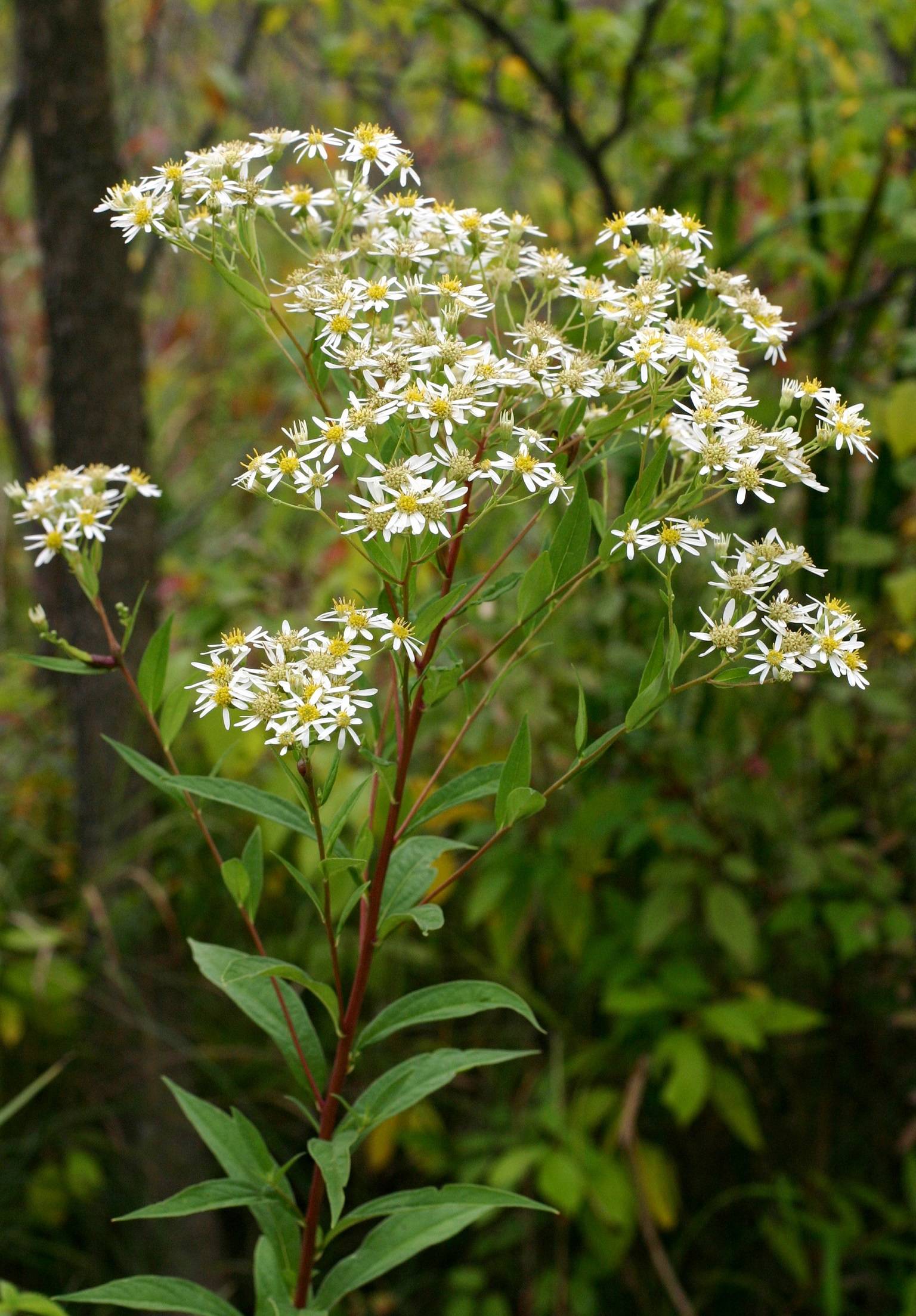Doellingeria
|
Family: Asteraceae |
Perennials, 40-200 cm (rhizomatous or with short woody crowns) . Stems erect, simple, glabrous or sparsely strigose, eglandular. Leaves basal and cauline; alternate; sessile; basal withering, oblanceolate; proximal cauline sometimes withering, reduced; mid cauline blades (1-nerved, venation brochidodromous) lanceolate to elliptic (little reduced distally, much reduced in arrays), margins entire, faces glabrate to moderately short-woolly or strigose. Heads radiate, (3-300) in flat-topped corymbiform arrays. Involucres cylindro-campanulate (3-6.8 ×) 1.8-4.6 mm. Phyllaries 16-40 in 3-5 series (erect) , 1-nerved, (midnerves raised, sometimes brownish and translucent, not keeled), lanceolate to deltate, unequal, pliable to rigid, margins narrowly scarious, dark green zone restricted to narrow bands along midnerves, apices rounded, glabrate to moderately strigose, sometimes strigose distally. Receptacles slightly convex, pitted, epaleate. Ray florets 2-10(-16), pistillate, fertile; corollas white. Disc florets 4-25(-50), bisexual, fertile; corollas pale yellow, ampliate, tubes shorter than throats, lobes 5, often spreading to reflexed, deltate (2-4.2 mm); style-branch appendages narrowly lanceolate (papillate on at least distal 1 / 2 ). Cypselae terete to narrowly obconic, sometimes somewhat compressed (bases distinctly stipitate), 4-10-ribbed (ribs darkened, translucent, sometimes resinous), glabrous, eglandular, sometimes resinous; pappi persistent in 4 series, whitish outer of linear to subulate, short (5-15 % length inner) scales, 3 inner of 60-90 white to tan, barbellate bristles, outer apically attenuate, innermost clavate. x = 9. Doellingeria is one of the genera of North American asters that sometimes has been treated as separate from Aster in a broad sense. J. C. Semple et al. (1991) recognized four species in their study of Aster sect. Triplopappus; G. L. Nesom (1993c) is followed here in excluding Oclemena reticulata. Semple et al. (2002) are followed here by excluding all eastern Asian species from the genus. Semple and J. L. A. Hood (2005) noted that the pappus of Doellingeria includes four distinct whorls of bristles, not three as had been thought since the first Flora of North America.
|

